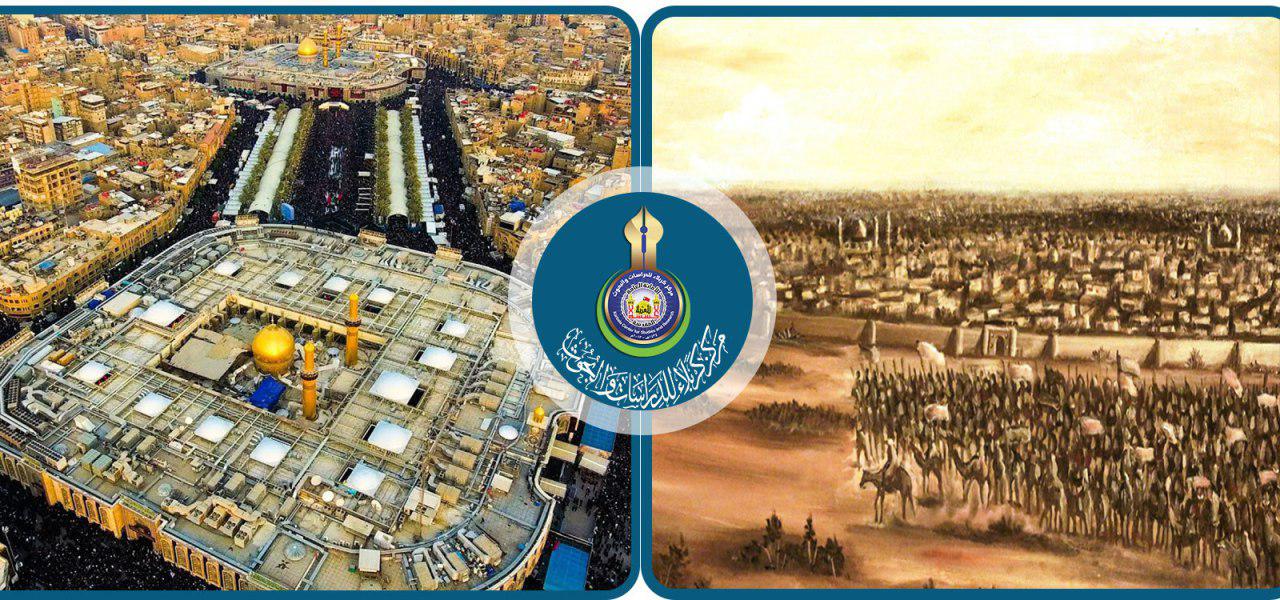In 198 A. H. (813 A. D.), building work in Karbala restarted during the rule of the Abbasid Caliph al-Ma'moun. He rebuilt the tomb of Imam Hussein, and house building followed around the holy tomb and thus, the city flourished in architecture once again.
Lumps of baked clay mixed with straw (cut down from wheat spikes) placed in rectangular mould until regular shapes are achieved so that straight and strongly built walls can be made of it. These naturally sun- dried clay blocks are called 'labin'. This labin was used in buildings and houses of ancient towns of Mesopotarnia such as Ur, Babylon and Uruk. Labin was also used in building the first Islarnic cities in Iraq such as Basra, Kufa and Wasit'. Clay was also used as a mud mortar and plaster for building walls made of 'Labin".
The houses built of labin in Karbala were very simple and consisted of an internal open courtyard called 'sahan' or 'hoUsh'. This is regarded as the centre of the house and was influenced in its design by the ancient houses whose ruins were found in Ur, South of Iraq, and Babylon, ýniddle of Iraq. The open courtyard (housh) is surrounded by one or two bedrooms and the other utilities on one side and a covered hall (jarma) on the other side which is used by the fwnily as a summer resting place'.
When the Abbasid ruler, al-Mutawakil ala Allah, took over in 236 A. H. (850 A. D. ) as a Caliph, Muslims during his initial rule were going to Karbala to perform religious pilgrimage to the tomb of Imam Hussein (A. S. ). The number of houses around the tomb increased and a market (souk) was built nearby. Afterwards, al-Mutawakil during his rule, ended in 247 A. H. (861 A. D. ), demolished the tomb and all the buildings and houses around it'.
In 247 A. H. (861 A. D. ), during the period of the Abbasid Caliph al-Muntasir ibn (son oo al-Mutawakil, building work once again restarted in Karbala. He rebuilt the tomb of Hussein (A. S. ) and gradually houses started to increase again and were built next to each other especially in the area around the tomb'.
These houses were at low level and their height did not exceed eight yards. This style of building confonned to the special architectural fabric of Karbala city which existed those days'.
Local clay bricks (ajur) was used during the Abbasid period on a large scale for building mosques, religious schools, khans and some of the residential houses.
This ajur was considered the best local building material in terms of strength, quality, availability and suitability to the environmental conditions of the area.
The local bricks in question were exclusively used in building the domes and vaults in place of poplar and wood made from the stems of date- palms. With gypsum (jus), another popular local material, mortaring of bricks was achieved very quickly. The use of bricks is an old architectural tradition which was known in building work in Mesopotamia in ancient cities such as Babylon, Ur and Uruk'.
Source:
- Holy Shrines of Karbala: By Raouf Mohamed Ali Al-Ansari [p 88-90].

